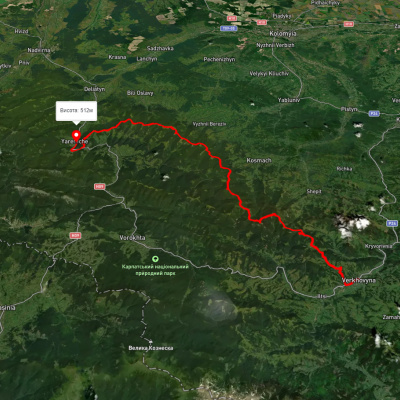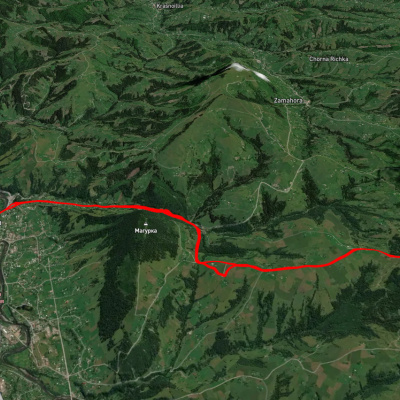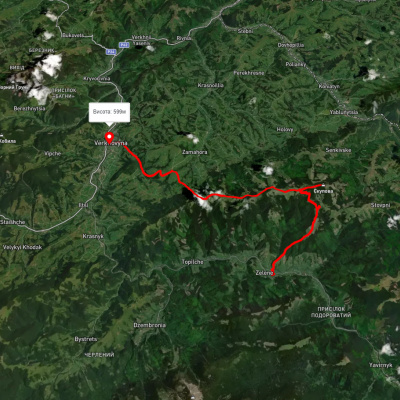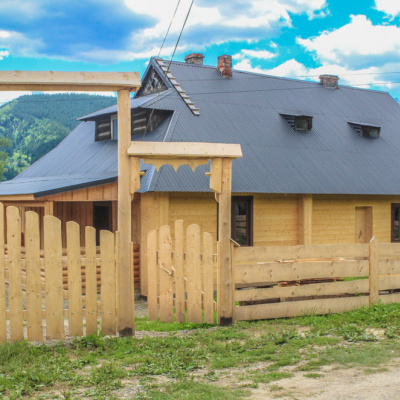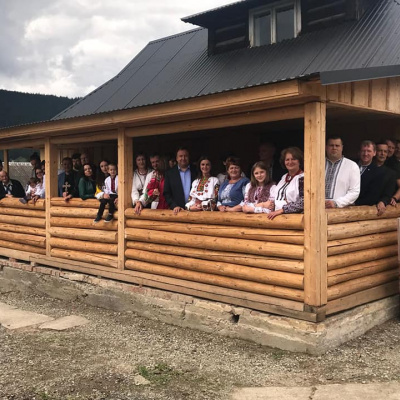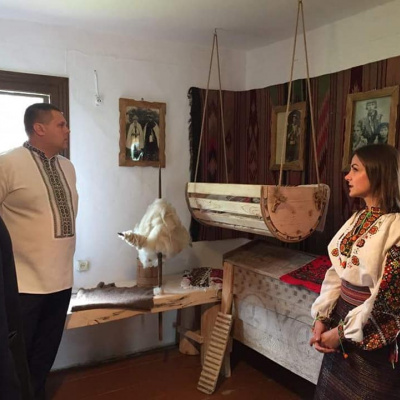Petro Shekerik-Donikovyi Museum, Verkhovyna
Petro Shekerik-Donikiv was a famous patriot of the Hutsul region, a governor of Verkhovyna in the 1930s, an ambassador to the Polish Sejm, and an active public figure who collaborated with Ivan Franko, Mykhailo Kotsiubynskyi, Hnat Khotkevych, and Stanislav Vincenz.
He was a unique and multifaceted person who cared about Ukrainians and was a great writer at the time. He wrote the book Dido Ivanchyk, in which the author depicts the material and spiritual world of the Hutsuls from ancient times to the First World War. Here, in the museum, you can see photographs, archival documents, manuscripts, and personal belongings of the public figure Petro Shekerik-Donikovyi.
According to the descendants of Petro Shekerik-Donykiv, the owners of the house, Nadiya Mikivnychuk and her father Ivan Makinychuk, the house where the memorial museum was opened today has been preserved in the form in which it was built in 1933 during the life of the militant. Kateryna Shekeriak-Makynychuk inherited the house and gave it to her granddaughter Nadiya, who decided to create a museum here together with her father.
Petro Shekeriak-Donikiv was a public figure, ethnographer, writer, and military officer who served in the 24th Regiment of Austrian Infantry in Kolomyia and obtained permission for Ukrainian soldiers to speak their native language. He also took an active part in the creation and activities of the Hutsul theater in the village of Krasnoillia under the leadership of Hnat Khotkevych. He helped Mykhailo Kotsiubynskyi collect materials for his novel Shadows of Forgotten Ancestors. He was personally acquainted with Volodymyr Hnatiuk, Stanislav Vincenz, and other prominent personalities of the time. He was a writer who wrote in the Hutsul dialect, the author of the book Grandfather Ivanchyk.
Petro Shekerek-Donik Museum of the village Żabier, the largest village in Poland at the time. Petro Shekerik-Donik was a prominent personality of the Hutsul region, a public and political figure, ethnographer, writer, and military officer. He was actively involved in organizing the Sich movement in the Verkhovyna region. He was an active activist and an ambassador to the Polish Sejm.
He served in the 24th Regiment of Austrian Infantry in Kolomyia and obtained permission for Ukrainian soldiers to speak their native language. He also took an active part in the creation and activities of the Hutsul theater in the village of Krasnoillya under the leadership of Hnat Khotkevych. He helped Mykhailo Kotsiubynskyi collect materials for his novel Shadows of Forgotten Ancestors.
He was personally acquainted with Mykhailo Kotsiubynskyi, Volodymyr Hnatiuk, Stanislav Vintsenz, and other prominent personalities of the time. In 1918-1919, he was a delegate to the National Council of the ZUNR from Kosiv County.
He was actively involved in the Sich movement, and in the 1930s he was Ambassador to the Polish Sejm from the Ukrainian Radical Party.
He took part in the celebration of the Unification of the ZUNR and the UPR on St. Sophia Square. For this he was arrested by the NKVD in 1940 and his fate is unknown.
By the way, for a long period of time, the writer lived in the house where a museum was created in his honor. The house in which the memorial museum is located has been preserved in the form that it was built in 1933 during the lifetime of Petro Shekerik-Donikovyi and belonged to his family. The house was inherited by Kateryna Shekeriak-Makivnychuk, who gave it to her granddaughter Nadiya.
The idea of creating the museum belongs to Ivan Makivnychuk and Nadiya Makivnychuk, who joined their efforts to restore and preserve what Petro Shekeriak-Donikov did for the Hutsul region. Showing and telling people how much he loved his native land, culture, respected and cared about the life and way of life of the Hutsuls.
He wrote on paper in the Hutsul dialect to leave a legacy to his descendants, so that the Hutsuls would know their history and continue it. So, when you read this book, you hear a pure Hutsul dialect," says Nadiya.
Location: Verkhovyna village, Ivano-Frankivsk region, 1 Cheremshynya Street. Entrance fees: general and pensioners - 25 UAH, students and pupils - 20 UAH.
Accommodation around Petro Shekerik-Donikovyi Museum, Verkhovyna:
Nearby hiking trails near Petro Shekerik-Donikovyi Museum, Verkhovyna:
Які маршрути проходять повз Petro Shekerik-Donikovyi Museum, Verkhovyna?
Пропонуємо пройти такі туристичні (пішохідні) маршрути через/біля Petro Shekerik-Donikovyi Museum, Verkhovyna: смт. Верховина, через г. Біла Кобила, г. Маковиця, Скелі Довбуша до м. Яремче, смт. Верховина – хр. Кринта-Скупова – смт. Верховина, с. Зелене, через г. Скупова до смт. Верховина, смт. Верховина – г. Скупова, смт. Верховина – хр. Кринта-Скупова, смт. Верховина, через г. Біла Кобила, г. Хорде до с. Татарів
